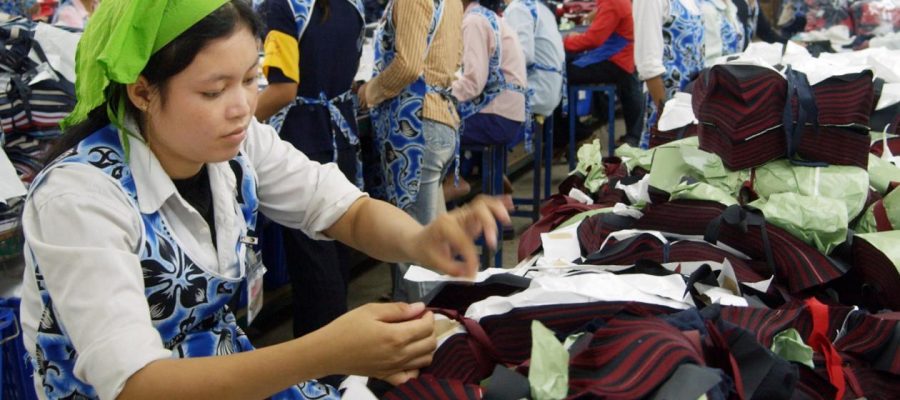Are You Supporting Sweatshops this Prom Season?
April 22, 2018
Prom season is here, and for many junior and senior girls, the frantic search for the perfect dress has begun. Every mall, bridal shop, and dress shop has been scoured, but, to no avail, they have not found “the one.” All eyes then turn to the internet.
The perfect dress is found, but at what cost? Are you really getting what the picture promises?
Many online clothing sites employ the labor of sweatshop workers to make their garments, and any purchases from that site go to supporting sweatshops. Here is a look into the world of online shopping, and signs to look out for to avoid supporting such conditions.
Sweatshops are defined as “a shop or factory in which employees work for long hours at low wages and under unhealthy conditions.” In addition to being unhealthy, they are also very unsafe. They violate two or more working laws, according to dosomething.org. Some conditions reported from sweatshops in China included having to work from 8 a.m. to 12 a.m. with no payment for overtime (which was usually needed to meet quotas), and women (the primary workforce in these conditions) were not allowed to get pregnant, so the company could avoid paying for maternity leave (the stranger.com).
Though there is also a presence of this in the U.S., this issue is most prevalent in developing countries, some of which ship goods to the United States. The New York Times notes, “Once, the garment-industry sweatshop was considered largely eradicated in the United States, although it may never have been eliminated to the extent that many in the industry and in the labor movement said it was…But in the last 25 years, foreign-made clothing, manufactured with labor costs that are far less than those in the United States, has taken an increasing share of the United States market.”
So, how do you avoid buying your dress from a site that makes it in such conditions, especially since there are so many horror stories about online prom dresses? Promgirl.com makes a list of suggestions: 1) don’t go off of the pictures, as an authentic picture does not mean that that will be the dress you get, 2) pay attention to the price: if it seems too good to be true, it probably is, and 3) beware of “made-to-order” dresses, as this means the website does not have stock of the dresses and must be made based on the information provided by the buyer.
You can also visit the “Contact Us” page and look for more than just an email address, as a website with no phone number and just an email address is an indicator of a knockoff site. Read the seller’s return policies to find out more about them and to also scour reviews. Visit the designer’s website, most of which will have a “Where to Buy” option, and trust auction sites, as most designers do not allow selling on those sites. A good way to check websites is also through TopPromWebsites.com which lists “verified authorized retail stores as well as which knock-off and counterfeit sites to avoid.”
Prom is one of the most exciting events of a high schooler`s career, so make sure you’re armed with the right tools to make it great.

